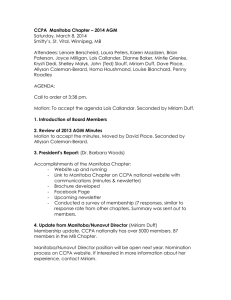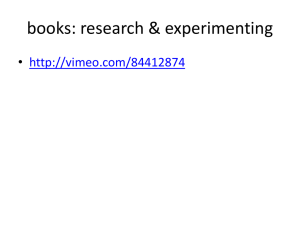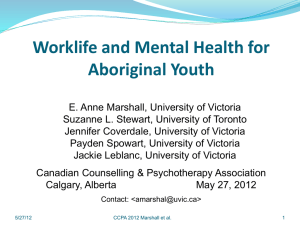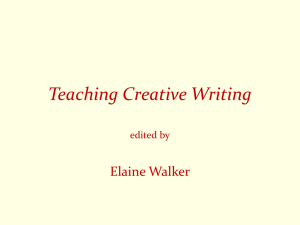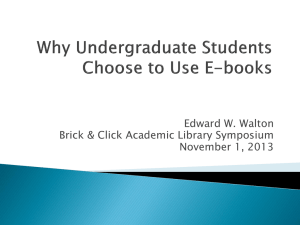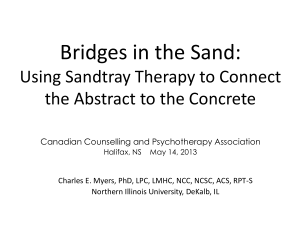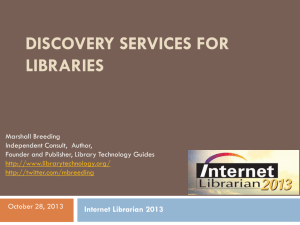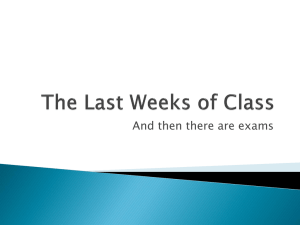Reading Habits Across Disciplines: A Study of Student
advertisement
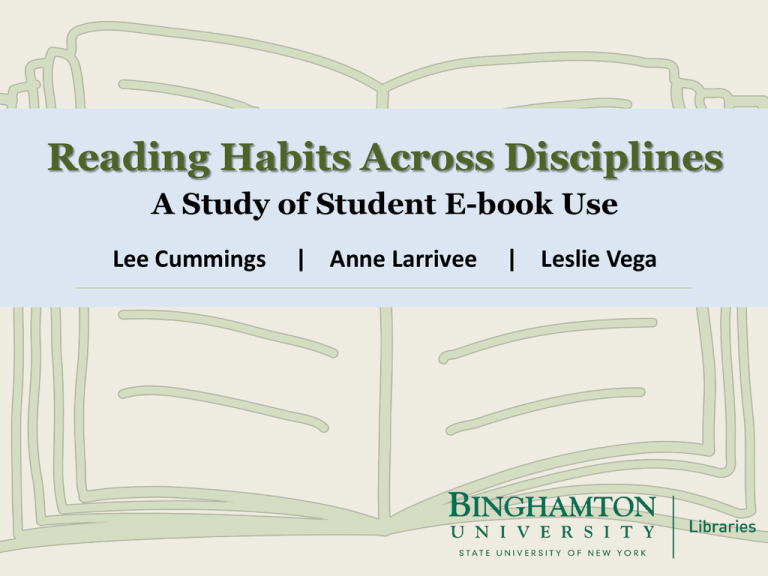
Reading Habits Across Disciplines A Study of Student E-book Use Lee Cummings | Anne Larrivee | Leslie Vega BU at a glance University Demographic 13,000 Undergrads 3,000 Grads Library Stats 2.5 million texts 340,000 electronic texts Motivations & Considerations Reading preferences Collection Development Commuters & Distance Learners Access Interlibrary Loan Trends in usage between disciplines Usability and quality Hypothesis The data obtained will assess preferences in regards to print vs. e-book usage. Aiding collection development Observing subject-specific trends Conclusions drawn = previous assumptions? Methodology + Survey Design Surveyed groups of students from 3 disciplinary areas in 3 different colleges: Art + Art History students from Harpur College of Arts and Sciences Watson School of Engineering and Applied Sciences students College of Community and Public Affairs (CCPA) students Methodology + Survey Design 9 Questions 2 months (Oct-Nov) Influential Articles *Levine-Clark, M. 2006. Electronic book usage: a survey at the University of Denver. Portal: Libraries and the Academy 6(3): 285-299. *Nariani, R. (2009). E-Books in the Sciences: If We Buy It Will They Use It?. Issues In Science & Technology Librarianship, (59), 3. Discipline / Departments Total Population of department # of Respondents Percent of Population who responded Art & Art History 156 27 17.3 % College of Community and Public Affairs (CCPA) 755 81 10.7 % Watson School of Engineering & Applied Science 2,745 146 5.3 % Participation Art & Art History 17% Engineering 5% CCPA 11% 27 respondents/ 156 146 respondents/ 2,745 81 respondents/ 755 With which department are you primarily affiliated? CCPA Art & Art History Engineering What is your class or academic rank? Art & Art History: Engineering: CCPA: 55.6% Graduate Students 32.9% Graduate Students 73.8% Graduate Students In the course of your academic studies, have you used books from the collections of Binghamton University Libraries? Art & Art History: Engineering: CCPA: 93% YES 48% YES 65% YES Total Respondents 160 140 120 100 YES 80 NO 60 40 20 0 YES NO 58% students have used books When using books from the libraries, do you prefer print or electronic books (e-books)? Note: For the purposes of this survey, e-books include electronic versions of any books which can be read electronically and accessed through the libraries' catalog, Find It!, or the subscription databases. Please exclude electronic journal articles, government documents, and e-books available freely on other websites. 25% 35.3% 35.4% 20.8% 54.2% Art & Art History 21.5% 43.1% Engineering 15.7% 49% CCPA Art & Art History: 60% More than 5 times a semester = 37.5%, never = 16.7% 50% Engineering: 30% More than 5 times a semester = 9.4%, never = 37.5% 20% CCPA: 40% Never More than 5xs 10% 0% More than 5 times a semester = 17.6%, never = 17.6% How often do you use e-books from the libraries? Total e-book usage across departments 45 40 35 30 25 20 15 10 5 0 Less than once per semester 1-5 X per semester More than 5 X per semester Never Important E-book Features Engineering Art & Art History CCPA Most important feature PDF availability Least important feature Printing (Engineering & Arts) Downloading (CCPA) Do you have a preferred e-book platform ? Art & Art History (1) JSTOR, Project Muse (1) ACLS Humanities E-books Engineering (1) PDF (2) Safari books CCPA (5) (1) (1) (1) EBSCO or EBSCOhost JSTOR Oxford Scholarship Online PDF version When accessing e-books from the libraries, what type of device do you most often use? Desktop computer, Laptop computer, E-book reader (i.e. Kindle, Nook), Tablet computer (i.e. iPad, Galaxy Tab), Mobile Phone Art & Art History Laptop Computer 68.4% Engineering Laptop Computer 76.9% CCPA Laptop Computer 48.7% Review of the E-book Literature “If it’s too inconvenient, I’m not going after it.” (Connaway et al., 2011) E-book use and attitudes “A Snapshot of Reading in America in 2013” January 16, 2014 by Kathryn Zickuhr and Lee Rainie Arts Engineering Social Sciences Comparative Studies Comment Frequently Mentioned Analysis ACCESS (14) Convenience Location Complaints (13) E-book features (9) Selection (4) Unaware (5) Frequent Terms: E-book readers (5) Textbooks (7) Convenience (8) Access (11) Format Preference Comments 8 Print- selection, read anywhere, can 7 write inside, image quality, kinesthetics, not a screen, sift-able 6 E-books- convenient, accessible, 5 weight, ease of searching, ehighlighting and notes 4 Journals- easier to cite 3 2 1 0 print print but will use ebook not ebooks prefers ebooks journals internet PDFs Comments “Print books are particularly important to art historians and others who look at images frequently.” ART HISTORY “Just have everything available online please.” ENGINEERING “… Ebooks are hard to navigate and crosslink. I always preferred printed books. However, if there's an efficient way to crosslink related topics in ebooks, I think it will be helpful.” ENGINEERING “End of print books = End of Civilization” CCPA Thank You! Questions ? Lee Cummings Engineering Librarian lcumming@binghamton.edu Anne Larrivee Social Sciences Librarian larrivee@binghamton.edu Leslie Vega Visual Arts Librarian lvega@binghamton.edu
